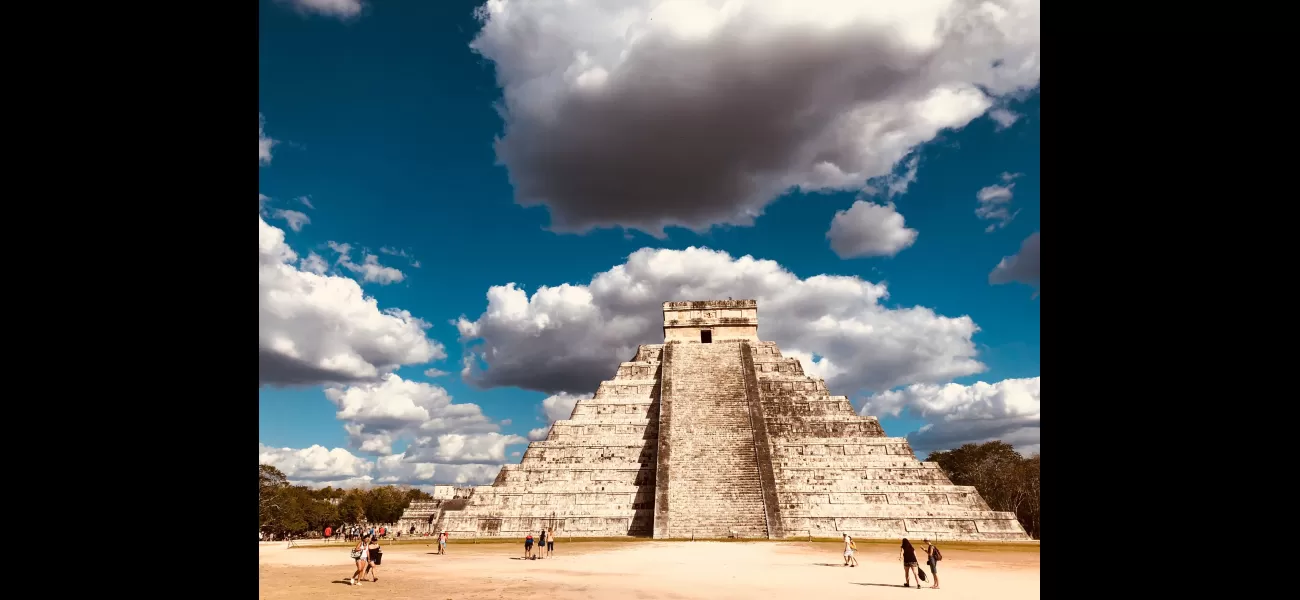The Mayans' ritualistic human sacrifices: how they were determined
DNA discovery unveils similarities in sacrificed individuals.
June 12th 2024.

According to recent research, the ancient practice of human sacrifice in Central America was not a random act of violence, but rather a carefully planned ritual that involved the specific selection of victims based on their gender, age, and even familial ties. This revelation sheds new light on the ancient city of Chichén Itzá in Mexico, which was a prominent Mayan settlement from 800CE to 1000CE.
Archaeological evidence of ritual sacrifices has been found throughout the site, particularly in the Sacred Cenote, a large sinkhole that holds the remains of over 200 individuals. In 1967, a discovery was made of a chultun, an underground cistern, near the Sacred Cenote. Inside were the remains of more than 100 young individuals. Using radiocarbon dating, researchers determined that the chultun was in use between the 600s and 1100s CE.
Recently, modern techniques have allowed for the analysis of DNA from 64 of the individuals found in the chultun. The results, published in the journal Nature, revealed that all 64 individuals were male. Additionally, about 25% of them were closely related, including two sets of twins. In contrast, the remains of young adult females, as well as male and female children, have been found in the Sacred Cenote.
The authors of the study note that the sacrificial practices may have been associated with Mayan beliefs. Sacrificing children was thought to bring about favorable crop yields and rainfall, while twin sacrifice had a connection to Mayan mythology. It is believed that the Mayan authorities preferred young males for sacrifices in the chultun, while other sacrificial practices were observed in different rites.
The Mayan civilization is estimated to have emerged around 250CE and eventually fell due to Spanish conquests in the 1500s and 1600s. The recent findings provide a deeper understanding of the ancient cultures and practices of Central America, shedding light on the intricate rituals and beliefs of the Mayan people.
Archaeological evidence of ritual sacrifices has been found throughout the site, particularly in the Sacred Cenote, a large sinkhole that holds the remains of over 200 individuals. In 1967, a discovery was made of a chultun, an underground cistern, near the Sacred Cenote. Inside were the remains of more than 100 young individuals. Using radiocarbon dating, researchers determined that the chultun was in use between the 600s and 1100s CE.
Recently, modern techniques have allowed for the analysis of DNA from 64 of the individuals found in the chultun. The results, published in the journal Nature, revealed that all 64 individuals were male. Additionally, about 25% of them were closely related, including two sets of twins. In contrast, the remains of young adult females, as well as male and female children, have been found in the Sacred Cenote.
The authors of the study note that the sacrificial practices may have been associated with Mayan beliefs. Sacrificing children was thought to bring about favorable crop yields and rainfall, while twin sacrifice had a connection to Mayan mythology. It is believed that the Mayan authorities preferred young males for sacrifices in the chultun, while other sacrificial practices were observed in different rites.
The Mayan civilization is estimated to have emerged around 250CE and eventually fell due to Spanish conquests in the 1500s and 1600s. The recent findings provide a deeper understanding of the ancient cultures and practices of Central America, shedding light on the intricate rituals and beliefs of the Mayan people.
[This article has been trending online recently and has been generated with AI. Your feed is customized.]
[Generative AI is experimental.]
0
0
Submit Comment





